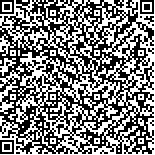宋振华,林夏妃,随燕芳,余丹,汪良,潘晶晶,甘春苗,张黎,张婷.站立桌辅助作业训练在脑梗死偏瘫患者上肢功能训练中的应用[J].中华物理医学与康复杂志,2018,40(8):575-579
扫码阅读全文

|
| 站立桌辅助作业训练在脑梗死偏瘫患者上肢功能训练中的应用 |
|
| |
| DOI: |
| 中文关键词: 站立桌 脑梗死 功能障碍 作业治疗 表面肌电 |
| 英文关键词: Standing Cerebral infarction Hemiplegia Dysfunction Occupational training Surface electromyography |
| 基金项目:海口市科信局基金(2013-SHG-04-021),海南省卫生厅医学科研课题(琼卫2012PT-63) |
|
| 摘要点击次数: 6580 |
| 全文下载次数: 6571 |
| 中文摘要: |
| 目的 探讨站立桌辅助站立位下作业治疗对偏瘫上肢功能活动、偏瘫侧肢体躯干肌肉肌电活动的影响。 方法 纳入60例脑梗死偏瘫患者按随机数字表法分为训练组和对照组,每组30例,训练组采用站立桌辅助站立体位进行上肢作业治疗训练,对照组则取坐位行上肢作业治疗。分别于患者初评时(治疗前)及治疗2周和治疗4周后,对2组患者的上肢运动功能活动、偏瘫侧肢体躯干肌肉表面肌电活动恢复情况进行对比,并进行统计学分析。 结果 ①治疗前,对照组和训练组患者的Fugl-Meyer运动功能评定量表(FMA)评分分别为(19.27±6.24)和(19.23±6.22)分,组间差异无统计学意义(P>0.05);治疗2周和治疗4周后,2组FMA评分[对照组(20.87±9.36)和(25.47±6.33)分;训练组(24.37±6.31)和(29.43±6.42)分]较治疗前有所提高,且训练组与组内治疗前比较,差异均有统计学意义(P<0.05),而对照组治疗2周后的组内比较差异无统计学意义(P>0.05),治疗4周后的组内比较差异有统计学意义(P<0.05);2组患者治疗后同时间点组间比较,训练组患者FMA评分的改善较对照组改善更为明显(P<0.05)。②治疗前,2组患者患侧肱二头肌、肱三头肌、腹直肌、竖脊肌、股二头肌、股四头肌、腓肠肌、胫骨前肌之间的表面肌电数值比较,差异均无统计学意义(P>0.05);治疗2周后,对照组和训练组的股二头肌、腓肠肌与组内治疗前比较,差异有统计学意义(P<0.05),其余各肌群的表面肌电数值与组内治疗前比较,差异无统计学意义(P>0.05);治疗4周后,对照组除胫骨前肌的表面肌电数值较组内治疗前差异不明显(P>0.05)外,其余各肌群的表面肌电数值以及训练组所测上述各肌群的表面肌电数值均较组内治疗前明显提高(P<0.05);治疗2周后,2组患者股二头肌、股四头肌、腓肠肌、胫骨前肌的表面肌电数值组间比较,差异有统计学意义(P<0.05);治疗4周后,2组所测所有肌肉的表面肌电数值组间比较,差异均有统计学意义(P<0.05)。 结论 与传统坐位下相比,站立状态下的上肢作业治疗能有效改善脑卒中偏瘫患者腹直肌及竖脊肌肌肉活动,明显促进偏瘫上肢的运动恢复。 |
| 英文摘要: |
| Objective To explore the effect of standing at a table while training on the upper limb function and muscle surface electromyography of hemiplegics. Methods Sixty hemiplegic persons were randomly divided into an experimental group and a control group, each of 30. The affected upper limbs of the experimental group were trained while standing at a table, while the control group was trained while sitting. Before the treatment, as well as after 2 and 4 weeks of treatment, both groups′ motor functioning was evaluated using the Fugl-Mayer upper limb assessment (FMA), as well as muscle surface electromyography. Results Before the treatment there was no significant difference between the two groups′ average FMA scores. After 2 and 4 weeks of treatment it had increased significantly in the experimental group, but in the control group the increase was not significant until the fourth week. In terms of surface myography, significant differences were observed in the biceps femoris and gastrocnemius muscles of both groups after 2 weeks. Two weeks later there was further significant improvement in both groups except for the tibialis anterior muscles of the control group. The differences between the two groups were significant after two weeks in the electromyograms of the biceps femoris, gastrocnemius muscle and anterior tibialis. After four weeks the differences between the groups in all of the electromyograms were significant. Conclusion Compared with the traditional sitting position, standing at a table while training can effectively improve the muscle activity of the rectus abdominis and the spine so as to promote the recovery of movement in hemiplegic upper limbs. |
|
查看全文
查看/发表评论 下载PDF阅读器 |
| 关闭 |